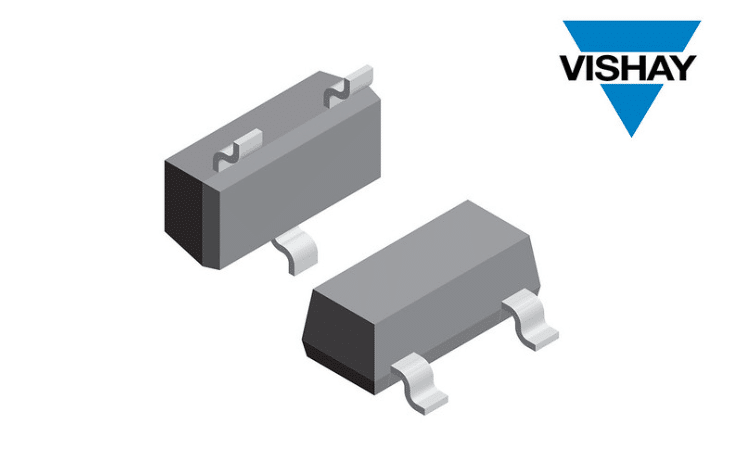
Automotive-grade diodes with peak pulse power up to 540 W and ±30 kV ESD immunity promise robust protection for vehicles, industrial systems, telecom, and consumer electronics.

Vishay Intertechnology, Inc. has launched two new Automotive Grade ESD protection diode series — the single-line VGSOTxx and two-line VGSOTxxC — designed for demanding high-current applications. Offered in the compact SOT-23 package, the devices deliver peak pulse power ratings up to 540 W and current ratings up to 44 A at an 8/20 µs pulse, outperforming Vishay’s earlier GSOTxx family.
Engineered with lower thermal resistance, the new diodes enhance heat dissipation, enabling more robust system designs for harsh environments. Target applications span across automotive electronics and controls, fuel cells, smart energy systems, industrial automation, motor drives, power tools, telecom infrastructure, consumer appliances, and even military electronic warfare systems.
The key features are:
- Two-line unidirectional ESD protection diode (common anode, can be used bidirectional)
- Single-line unidirectional ESD protection diode
- ESD immunity per IEC 61000-4-2, ISO 10605: ±30 kV contact, ±30 kV air discharge
The VGSOTxx and VGSOTxxC series can be deployed as unidirectional ESD protection devices, while the dual, common-anode configuration of the VGSOTxxC series also allows for bidirectional use. For applications requiring greater power handling, their dual-diode structure supports parallel operation, effectively doubling surge capability, line capacitance, and reverse leakage current.
Compliant with IEC 61000-4-2 and ISO 10605 standards, the new devices provide ESD immunity of ±30 kV for both air and contact discharge, while also meeting the AEC-Q101 human body model class H3B (>8 kV). They are fully RoHS-compliant, halogen-free, Vishay Green, and qualified to Vishay’s Automotive Grade standards, ensuring long-term reliability and quality.
Designed as direct drop-in replacements, the diodes simplify upgrades from Vishay’s earlier GSOT series and competing SOT devices, offering customers an easy path to higher power and current performance without redesign. Samples and production quantities are already available, with standard lead times of 12 weeks.









